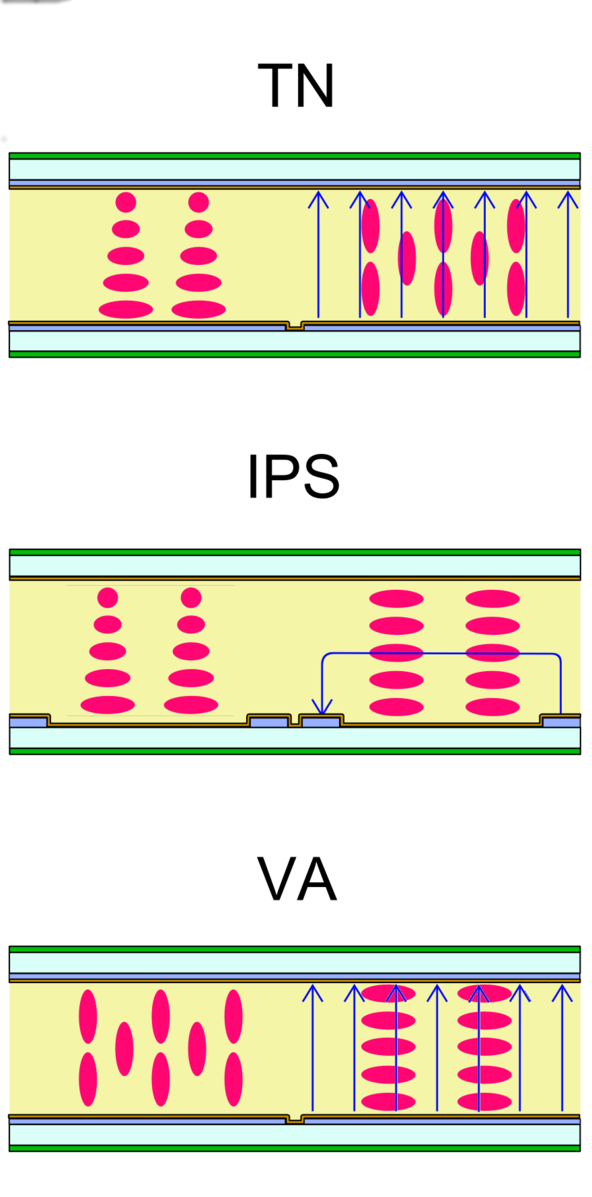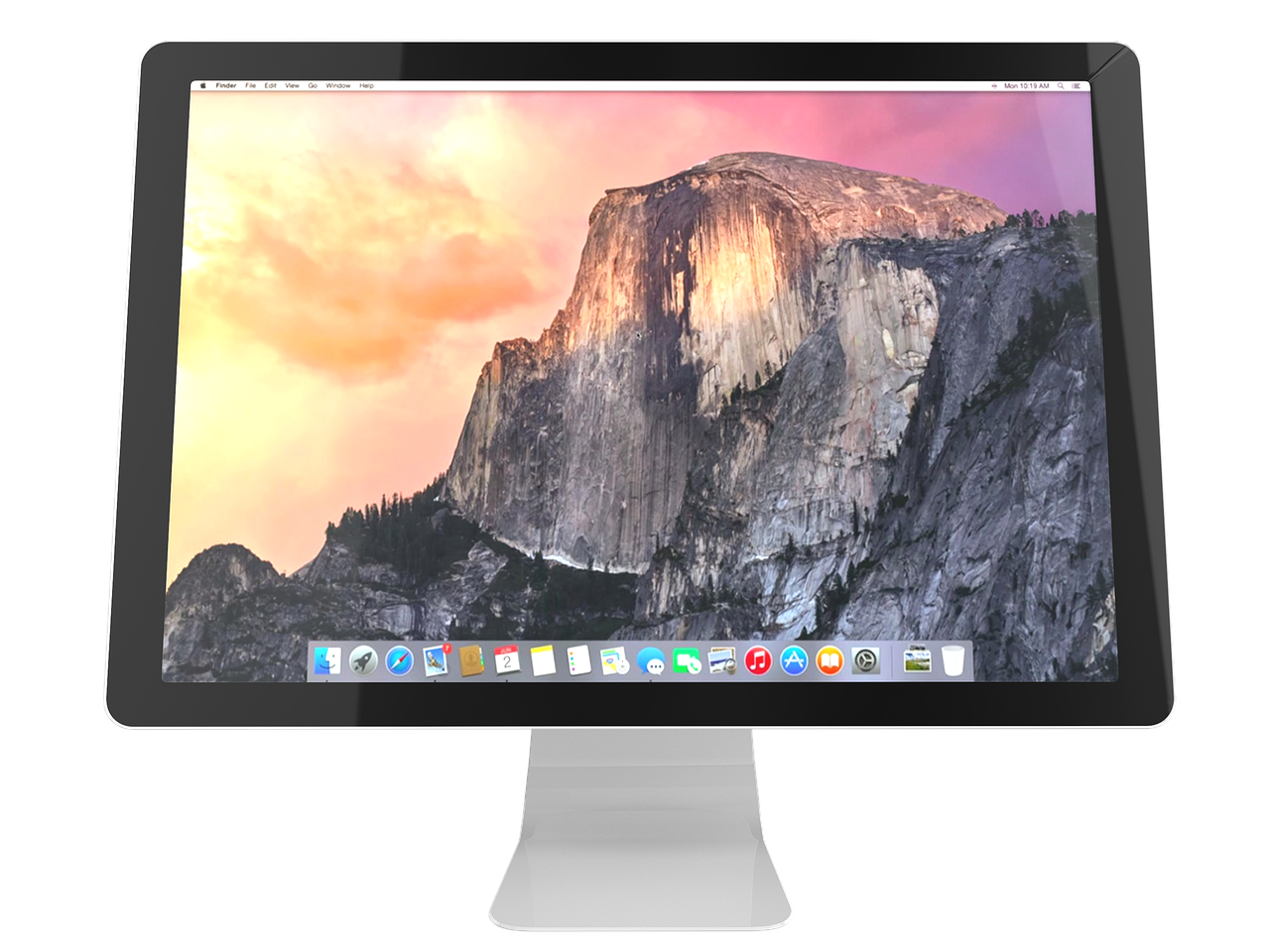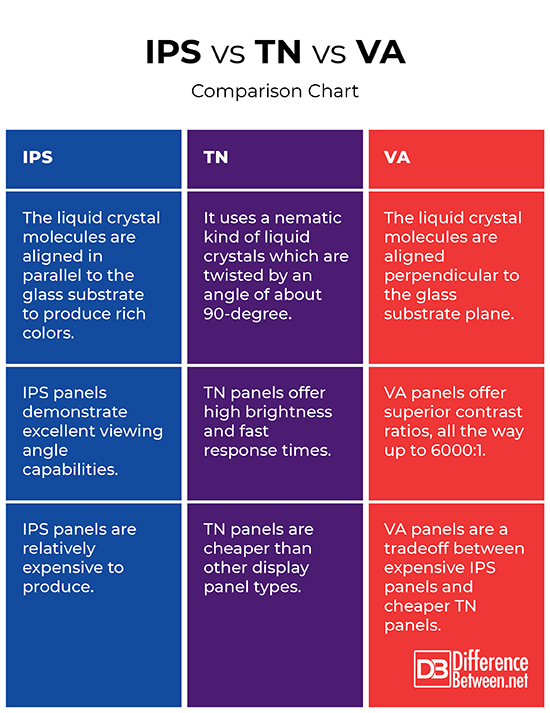Difference Between IPS, TN and VA
Looking for your next gaming or workstation monitor? Well, when it comes to computer monitors, you have to choose from the three main LCD panel types – TN (twisted nematic), VA (vertically aligned), and IPS (in-plane switching). So, you basically come across these three types of panels when looking for a monitor. They all are flat screen display technologies with similar structures and functions, but the detailed structure of the color filters array varies greatly in each liquid crystal mode. The difference lies in how the liquid crystal molecules are aligned with respect to the substrate plane, and how they reach when voltage is applied. Each display panel has its pros and cons. Let’s take a look at each of them.

What is TN (Twisted Nematic)?
TN is the original mode created for LCDs and it is the oldest among the LCD panel display technologies. TN stands for twisted nematic and it’s the most commonly used panels in computer monitors. Like the name suggests, it uses a nematic kind of liquid crystals which are twisted by an angle of about 90-degree and are sandwiched between a pair of polarizers. The direction of polarization of the beam is rotated by 90 degree. It takes advantage of something called an “active 3D shutter” technology which allows them to display twice as much information every second compared to other panels. However, the biggest downside of the conventional TN panels is their poor viewing angle performance. Also, image quality deteriorates when multiple viewers are looking at the display from different angles.

What is VA (Vertically Aligned)?
VA stands for vertically aligned and is yet another successful approach to improve the viewing angle capability. VA panels are characterized by their superb contrast ratio and image depth as compared to other LCD panel types. In VA panels, the nematic liquid crystal molecules are aligned perpendicular to the glass substrate plane in the absence of an electric filed. This requires a different kind of alignment layer. The VA mode got rid of the rubbing process, which ultimately translates to a yield advantage. Because of their improved viewing angle performance and best contrast ratio in the segment, the VA panels emerged as the leader in display technology in 2007.

What is IPS (In-Plane Switching)?
IPS stands for in-plane switching and it is a screen technology for liquid crystal displays developed to get rid of the limitations of the conventional TN panels – mostly the poor color reproduction and viewing angle performance. In IPS panels, the liquid crystal molecules are aligned in parallel to produce rich colors. Two counter electrodes are formed on the TFT substrate and switching is achieved by the rotation of the LC molecules. IPS panels are arguably the best in class in terms of viewing angle behavior, color reproduction, faster response times, exceptional color accuracy, and screen consistency. This is why IPS panels are mostly used for rendering, but the downside is that they are relatively expensive compared to other LCD display panel technologies.
Difference between IPS, TN and VA
Technology
– While they all are great screen technologies for liquid crystal displays, the detailed structure of the color filters array varies greatly in each liquid crystal mode. TN is the oldest among the LCD panel display technologies that use a nematic kind of liquid crystals which are twisted by an angle of about 90-degree and are sandwiched between a pair of polarizers. In VA panels, the nematic liquid crystal molecules are aligned perpendicular to the glass substrate plane in the absence of an electric filed. In IPS panels, the liquid crystal molecules are aligned in parallel to the glass substrate to produce rich colors.
Viewing Angle
– The viewing angle is probably the best selling point in computer monitors because this affects your perception of the content and ensures color consistency at different angles with little or no color distortion. TN panels have a poor reputation in terms of viewing angle and colors seem a little washed when you’re not directly sitting at the front of the screen. VA panels are not good either but they are definitely better than their TN counterparts when it comes to viewing angle performance. IPS panels, on the other hand, demonstrate excellent viewing angle capabilities and they have much wider viewing angles compared to both VA and TN display panel types.
Picture Quality
– TN panels use an “active 3D shutter” technology which allows them to display twice as information every second as compared to other panels, making them an ideal choice for gaming monitors. TN panels offer faster response times while using less power and they are cheaper. VA panels offer superior contrast ratios and can go all the way up to 6,000:1, which is much more than what IPS panels can achieve. VA panels are kind of a tradeoff between the conventional TN panels and the newer IPS panels. IPS panels are arguably the best in class in terms of viewing angle behavior, color reproduction, faster response times, exceptional color accuracy, and screen consistency.
IPS vs. TN vs. VA: Comparison Chart

Summary
Each of the display technologies have their fair share of pros and cons. TN panels are still a great choice for gaming monitors because of their faster response times and low power consumption. Plus, they are cheaper. But TN panels definitely suffer from poor viewing angle performance and color consistency, and they are old. VA panels offer superior contrast ratios and image depth in the LCD category, with a nice management of black levels. But VA also suffers from quality degradation at different angles. IPS panels, on the other hand, are a complete package with wider viewing angles, nice color reproduction, faster response times, exceptional color accuracy, and screen consistency. So, whatever you choose, you can find a multitude of options and it finally boils down to your usage and requirements.
- Difference Between Caucus and Primary - June 18, 2024
- Difference Between PPO and POS - May 30, 2024
- Difference Between RFID and NFC - May 28, 2024
Search DifferenceBetween.net :
 Email This Post
: If you like this article or our site. Please spread the word. Share it with your friends/family.
Email This Post
: If you like this article or our site. Please spread the word. Share it with your friends/family.
Leave a Response
References :
[0]Yeh, Pochi and Claire Gu. Optics of Liquid Crystal Displays. New Jersey, United States: John Wiley & Sons, 2009. Print
[1]Souk, Jun et al. Flat Panel Display Manufacturing. New Jersey, United States: John Wiley & Sons, 2018. Print
[2]Kriss, Michael. Handbook of Digital Imaging. New Jersey, United States: John Wiley & Sons, 2015. Print
[3]Boer, William den. Active Matrix Liquid Crystal Displays: Fundamentals and Applications. Amsterdam, Netherlands: Elsevier, 2011. Print
[4]Image credit: https://commons.wikimedia.org/wiki/File:Old_Laptop_Used_for_Home_Security_Monitoring.jpg
[5]Image credit: https://pixy.org/src/524/5249090.jpg
[6]Image credit: https://commons.wikimedia.org/wiki/File:Liquid_Crystal_Display_TN-IPS-VA_(ON%26OFF).PNG

